Abstract
Synthetic thyrotropin-releasing hormone (TRH) was administered intravenously in a dose of 7 μg/kg to 20 normal children ages 4-13 yr. Serum thyroid-stimulating hormone (TSH) was measured by radioimmunoassay and rose from a mean value of 1.7 μU/ml (range = < 1.25-7.2) to a mean peak value of 21.5 μU/ml (5.2-33.2) at 15 or 30 min after administration.
13 patients with idiopathic hypopituitarism and apparent normal thyroid function, ages 3-19 yr, responded to TRH in a manner very similar to the control subjects: TSH rose from a mean value of 1.8 μU/ml (range < 1.25-4.3) to a mean peak value of 18.5 μU/ml (range = 9.5-45.0) which occurred between 15 and 60 min after TRH.
13 idiopathic hypopituitary patients with documented thyroid deficiency were tested after thyroid therapy had been discontinued for a minimum of 10 days. The serum TSH values in 10 of 13 patients rose from a mean base line level of 2.2 μU/ml (< 1.25-5.3) to a peak mean value of 32.5 μU/ml (9.6-61.3) between 30 and 120 min after TRH. In three patients, however, little or no TSH response was detected, even when serum thyroxine levels were extremely low. Similar to the latter group, three of five patients with hypopituitarism secondary to craniopharyngiomas had undetectable or barely measurable TSH levels before and after TRH. Two of these five patients had significant responses which were compatible with hypopituitarism resulting from damage to the hypothalamus or hypothalamic vessels instead of the pituitary.
Side effects were experienced in 41 of 54 patients (76%). The effects were limited to a mild nausea-like sensation in 63% of the patients and occurred within the first 5 min after receiving TRH. No evidence of serious toxicity or long-term side effects was noted.
The TRH test is a safe, effective way to measure TSH reserve in children. The positive response in 10 of 13 patients with secondary hypothyroidism supports data previously accumulated that most patients with idiopathic hypopituitarism have an abnormality of their hypothalamic-releasing hormone function, whereas the remaining minority probably have primary pituitary disease.
Full text
PDF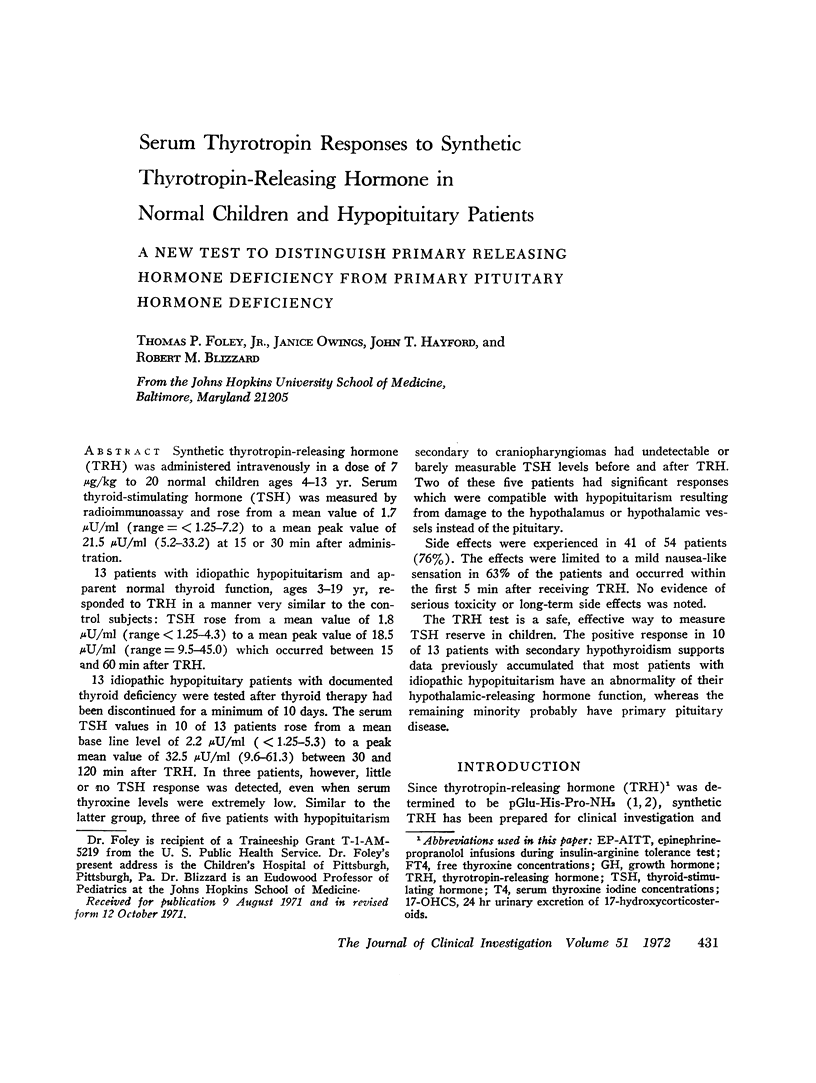
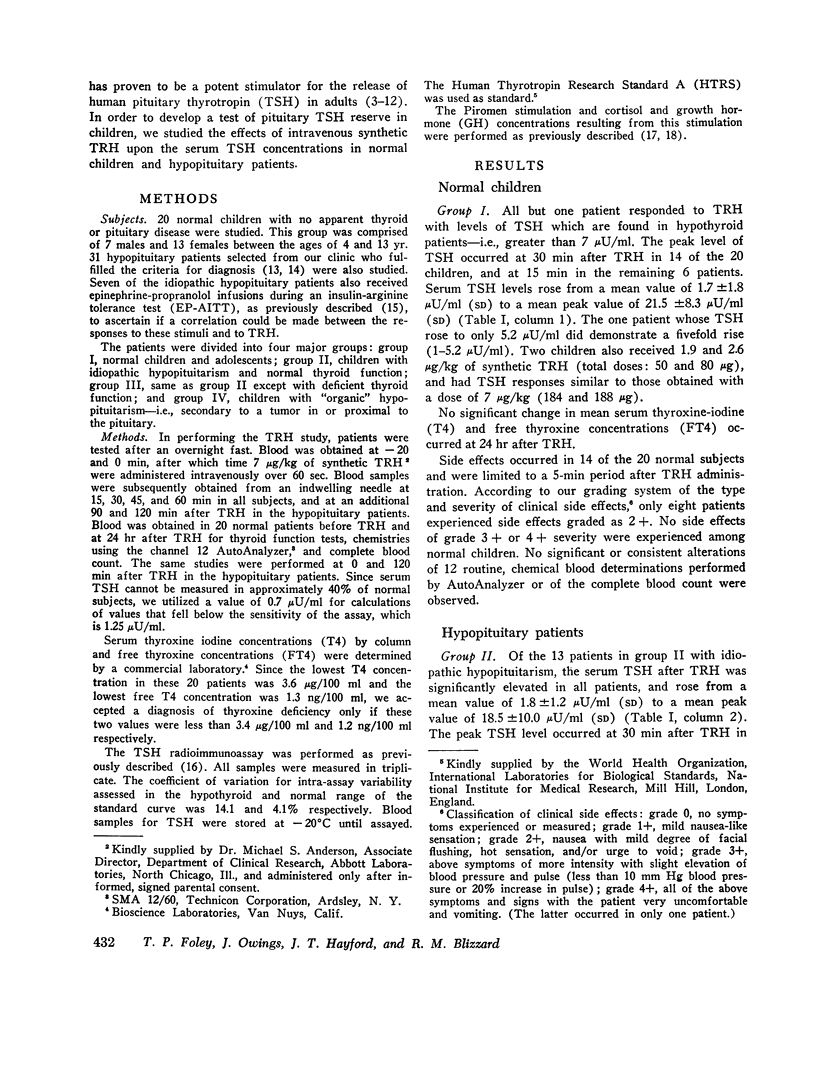
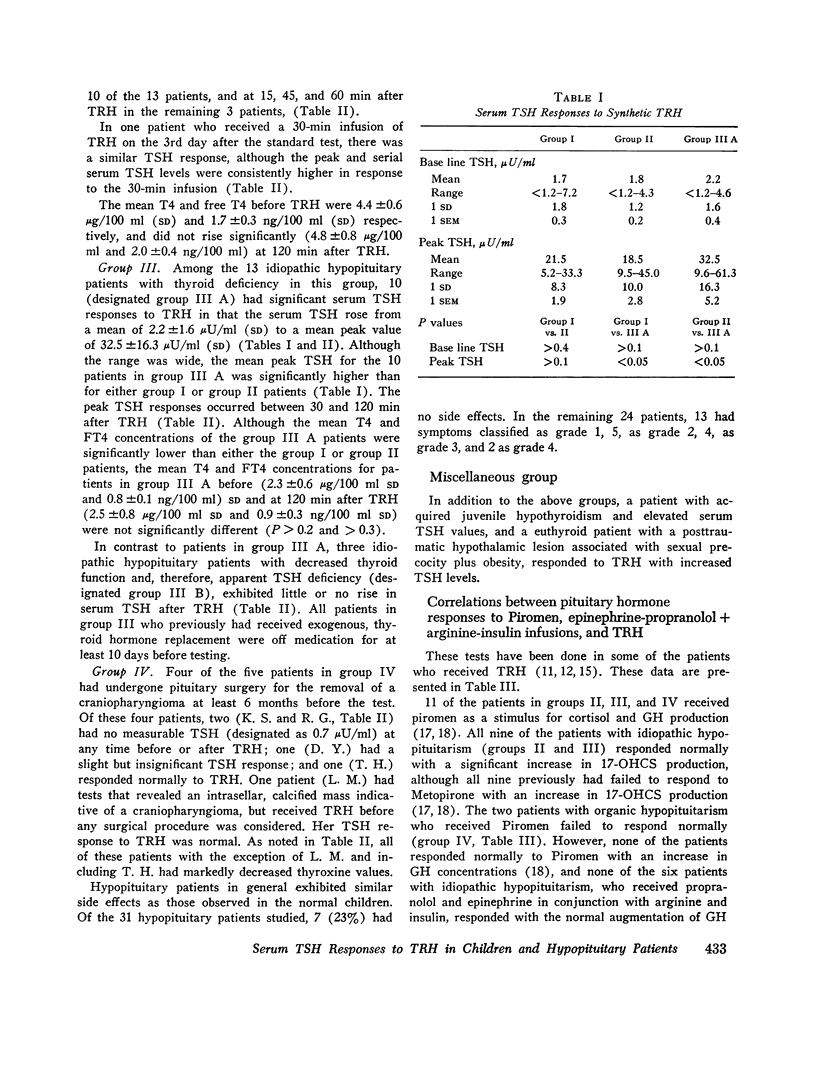
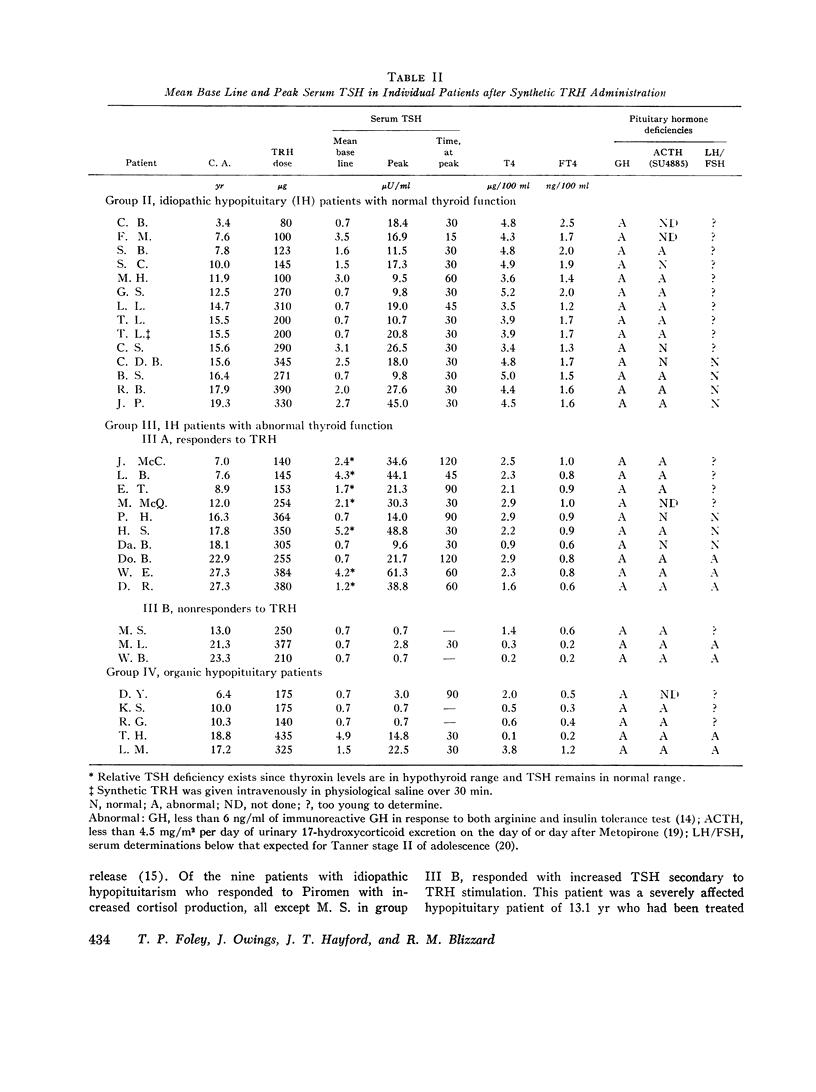
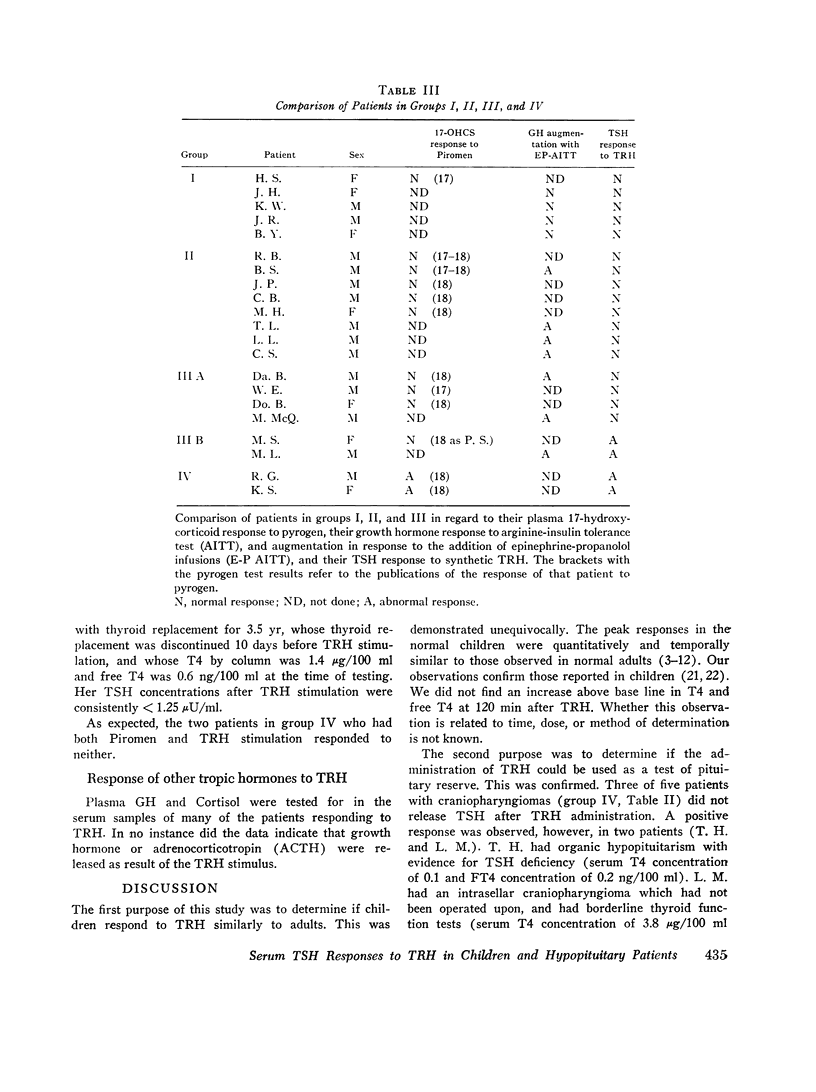
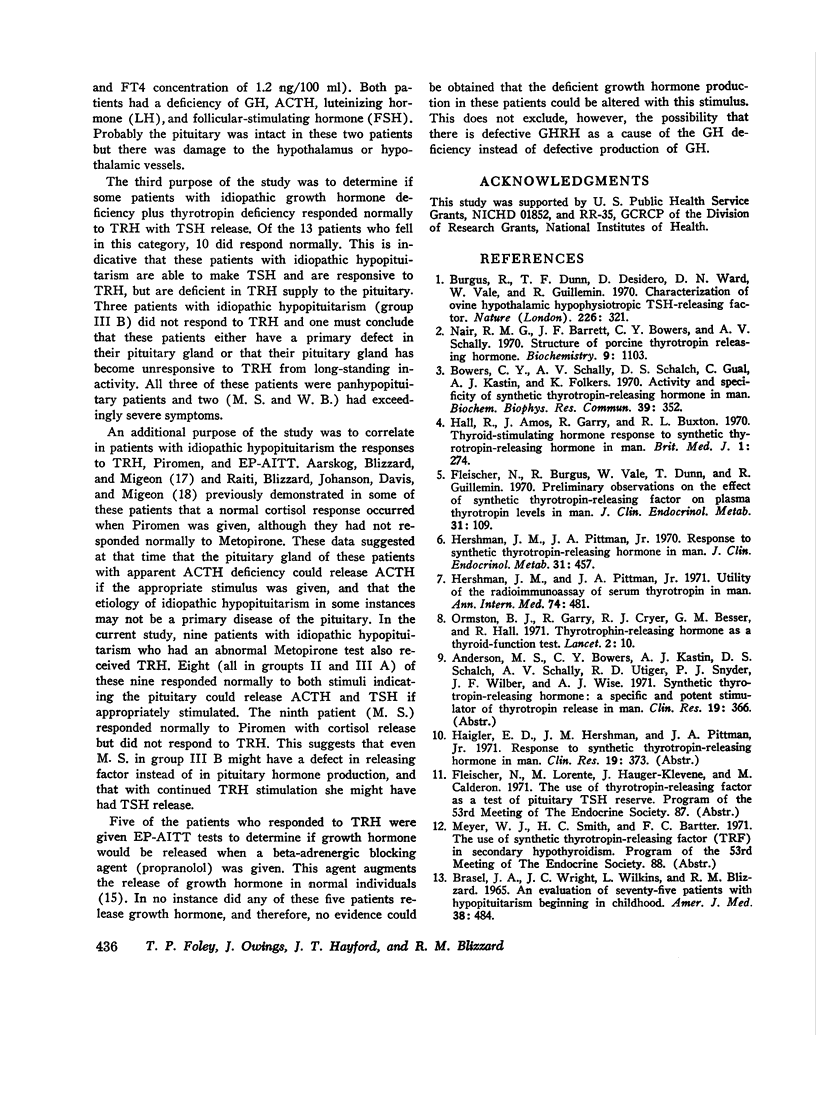
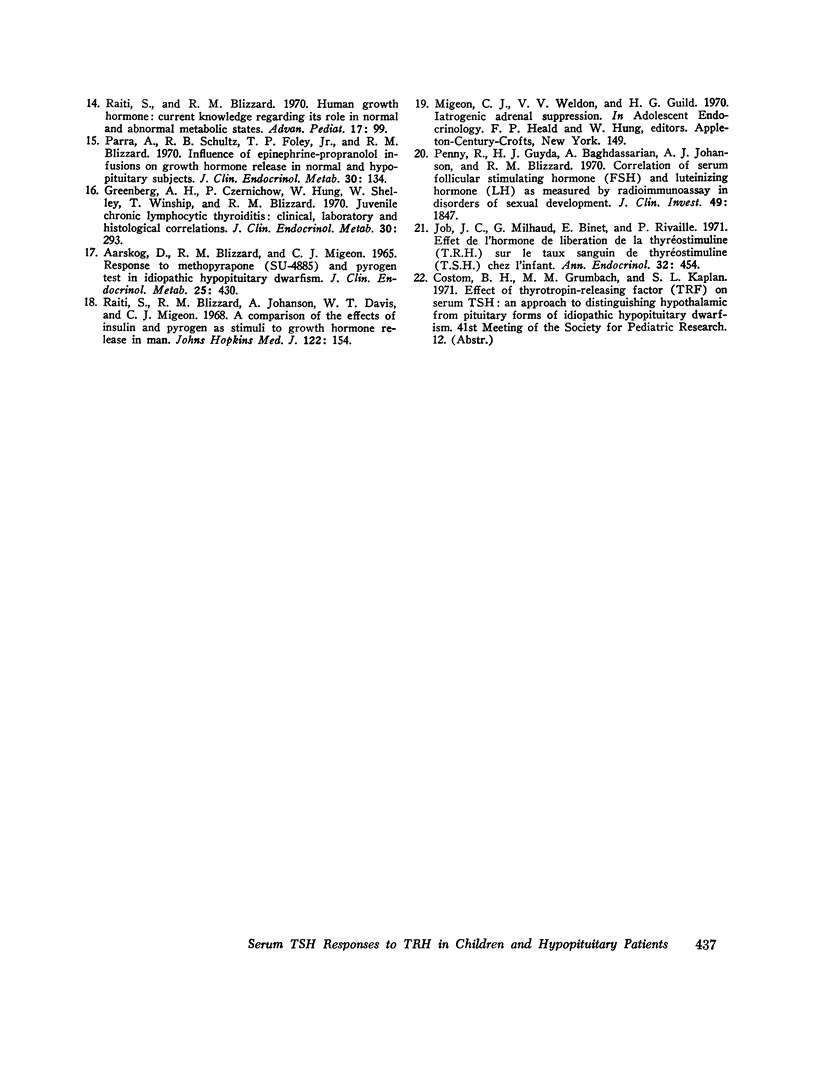
Selected References
These references are in PubMed. This may not be the complete list of references from this article.
- BRASEL J. A., WRIGHT J. C., WILKINS L., BLIZZARD R. M. AN EVALUATION OF SEVENTY-FIVE PATIENTS WITH HYPOPITUITARISM BEGINNING IN CHILDHOOD. Am J Med. 1965 Apr;38:484–498. doi: 10.1016/0002-9343(65)90127-0. [DOI] [PubMed] [Google Scholar]
- Bowers C. Y., Schally A. V., Schalch D. S., Gual C., Kastin A. J., Folkers K. Activity and specificity of synthetic thyrotropin-releasing hormone in man. Biochem Biophys Res Commun. 1970 May 11;39(3):352–355. doi: 10.1016/0006-291x(70)90583-8. [DOI] [PubMed] [Google Scholar]
- Burgus R., Dunn T. F., Desiderio D., Ward D. N., Vale W., Guillemin R. Characterization of ovine hypothalamic hypophysiotropic TSH-releasing factor. Nature. 1970 Apr 25;226(5243):321–325. doi: 10.1038/226321a0. [DOI] [PubMed] [Google Scholar]
- Fleischer N., Burgus R., Vale W., Dunn T., Guillemin R. Preliminary observations on the effect of synthetic thyrotropin releasing factor on plasma thyrotropin levels in man. J Clin Endocrinol Metab. 1970 Jul;31(1):109–112. doi: 10.1210/jcem-31-1-109. [DOI] [PubMed] [Google Scholar]
- Greenberg A. H., Czernichow P., Hung W., Shelley W., Winship T., Blizzard R. M. Juvenile chronic lymphocytic thyroiditis: clinical, laboratory and histological correlations. J Clin Endocrinol Metab. 1970 Mar;30(3):293–301. doi: 10.1210/jcem-30-3-293. [DOI] [PubMed] [Google Scholar]
- Hall R., Amos J., Garry R., Buxton R. L. Thyroid-stimulating hormone response to synthetic thyrotrophin releasing hormone in man. Br Med J. 1970 May 2;2(5704):274–277. doi: 10.1136/bmj.2.5704.274. [DOI] [PMC free article] [PubMed] [Google Scholar]
- Hershman J. M., Pittman J. A., Jr Response to synthetic thyrotropin-releasing hormone in man. J Clin Endocrinol Metab. 1970 Oct;31(4):457–460. doi: 10.1210/jcem-31-4-457. [DOI] [PubMed] [Google Scholar]
- Hershman J. M., Pittman J. A., Jr Utility of the radioimmunoassay of serum thyrotrophin in man. Ann Intern Med. 1971 Apr;74(4):481–490. doi: 10.7326/0003-4819-74-4-481. [DOI] [PubMed] [Google Scholar]
- Job J. C., Milhaud G., Binet E., Rivaille P. Effet de l'hormone de libération de la thyréostimuline (T.R.H.) sur le taux sanguin de thyréostimuline (T.S.H.) chez l'enfant. Ann Endocrinol (Paris) 1971 May-Jun;32(3):454–459. [PubMed] [Google Scholar]
- Nair R. M., Barrett J. F., Bowers C. Y., Schally A. V. Structure of porcine thyrotropin releasing hormone. Biochemistry. 1970 Mar 3;9(5):1103–1106. doi: 10.1021/bi00807a008. [DOI] [PubMed] [Google Scholar]
- Ormston B. J., Cryer R. J., Garry R., Besser G. M., Hall R. Thyrotrophin-releasing hormone as a thyroid-function test. Lancet. 1971 Jul 3;2(7714):10–14. doi: 10.1016/s0140-6736(71)90005-5. [DOI] [PubMed] [Google Scholar]
- Parra A., Schultz R. B., Foley T. P., Jr, Blizzard R. M. Influence of epinephrine-- propanolol infusions on growth hormone release in normal and hypopituitary subjects. J Clin Endocrinol Metab. 1970 Jan;30(1):134–137. doi: 10.1210/jcem-30-1-134. [DOI] [PubMed] [Google Scholar]
- Penny R., Guyda H. J., Baghdassarian A., Johanson A. J., Blizzard R. M. Correlation of serum follicular stimulating hormone (FSH) and luteinizing hormone (LH) as measured by radioimmunoassay in disorders of sexual development. J Clin Invest. 1970 Oct;49(10):1847–1852. doi: 10.1172/JCI106402. [DOI] [PMC free article] [PubMed] [Google Scholar]
- Raiti S., Blizzard R. M. Human growth hormone: current knowledge regarding its role in normal and abnormal metabolic states. Adv Pediatr. 1970;17:99–123. [PubMed] [Google Scholar]
- Raiti S., Blizzard R. M., Johanson A., Davis W. T., Migeon C. J. A comparison of the effects of insulin and pyrogen as stimuli to growth hormone release in man. Johns Hopkins Med J. 1968 Mar;122(3):154–159. [PubMed] [Google Scholar]


